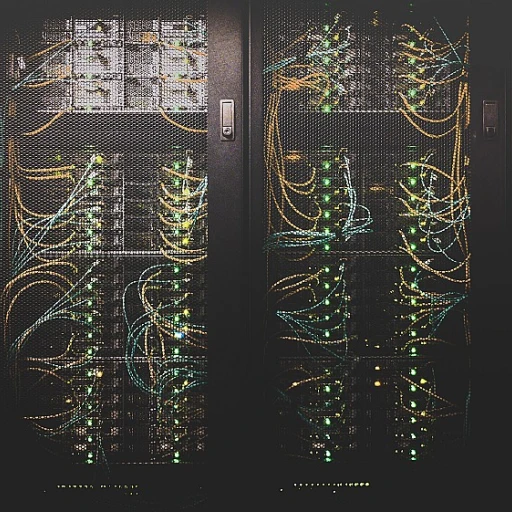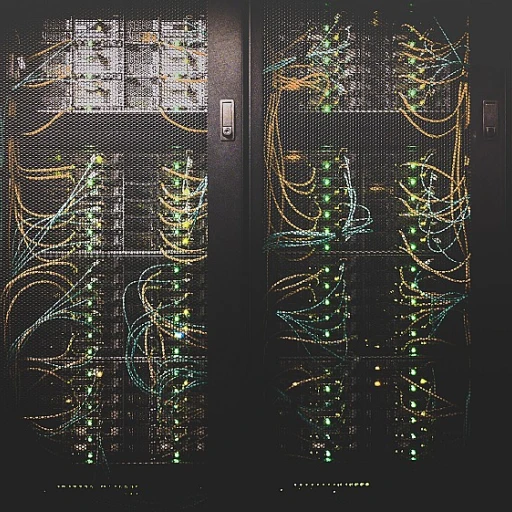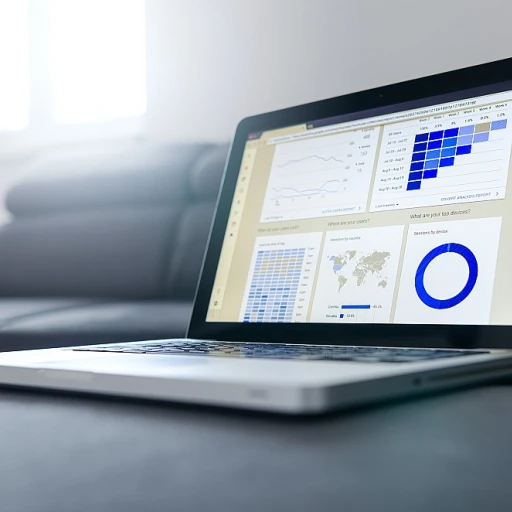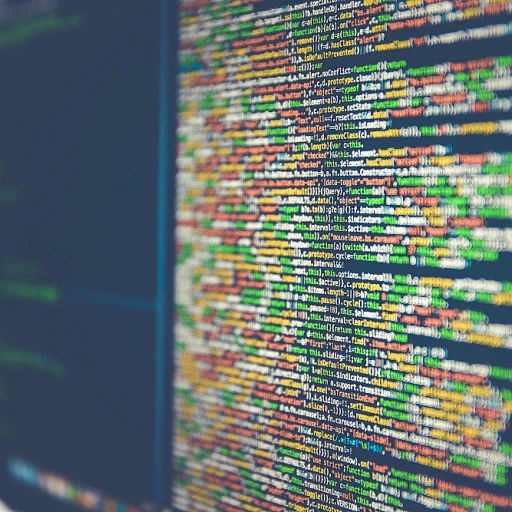
The rise of PDF as a universal format
The Ubiquity of PDFs in the Digital World
PDFs have become a cornerstone in the realm of digital documents, offering a universal format that ensures consistency across different devices and platforms. This format's ability to maintain the integrity of a document's layout, regardless of the software or hardware used to view it, has made it indispensable in both professional and personal settings. As machines learn to navigate this complex landscape, understanding PDFs becomes crucial for enhancing accessibility and efficiency.
One of the key reasons for the widespread adoption of PDFs is their ability to encapsulate text, images, and even interactive elements like links and forms, all while preserving the original design. This makes them an ideal choice for sharing documents that need to be viewed exactly as intended, without the risk of formatting issues. As a result, PDFs are often the go-to format for official documents, reports, and publications.
However, the rise of PDFs also presents challenges, particularly in terms of machine learning. Machines must learn to interpret the diverse range of content within PDFs, from simple text to complex graphics and mathematical equations. This requires sophisticated algorithms capable of understanding the underlying principles and concepts that govern PDF structures.
As we explore the future of software, the ability of machines to effectively process and understand PDFs will play a pivotal role in shaping new workflows and applications. For more insights into how software is evolving to meet these challenges, consider navigating software's next frontier.
Challenges in interpreting PDFs
Understanding the Complexities of PDF Interpretation
PDFs have become a staple in digital document sharing due to their consistent formatting across devices. However, this universality comes with its own set of challenges when it comes to machine learning and interpretation. Machines learn to process PDFs by overcoming several hurdles, primarily due to the format's inherent complexity.
One of the main issues is the fixed layout of PDFs. Unlike HTML, which is fluid and adaptable, PDFs maintain a rigid structure. This fixed width and layout can make it difficult for machines to extract and interpret content accurately. The document's visual elements, such as images and tables, are often embedded in ways that are not easily parsed by machines.
Moreover, PDFs are designed to be human-readable, which means that the underlying structure is not always logical from a machine's perspective. For instance, text may be stored in a non-linear fashion, complicating the process of extracting meaningful data. Machines must learn to navigate these complexities, often requiring advanced algorithms to understand the document's math and layout principles.
Another challenge is accessibility. While PDFs are widely used, not all are created with accessibility in mind. This can hinder machine learning models that rely on clear, structured data. Additionally, privacy concerns arise when dealing with sensitive information within PDFs. Ensuring compliance with privacy policies and maintaining data security is crucial when machines process these documents.
Despite these challenges, advancements in machine learning are paving the way for more efficient PDF processing. By leveraging sophisticated techniques, machines are increasingly able to interpret and extract data from PDFs, enhancing their utility across various industries. For more insights into how emerging technologies are influencing human-computer interaction, you can find more information here.
Machine learning techniques for PDF interpretation
Unpacking the Techniques Behind PDF Interpretation
As machines learn to navigate the complex world of PDFs, several machine learning techniques have emerged to tackle the challenges associated with this universal document format. These techniques are not just about understanding the text but also about grasping the intricate layout and structure that PDFs often present.
One of the core principles in PDF interpretation is the ability to extract content accurately. This involves recognizing text, images, and other elements within a PDF, which can be a daunting task due to the diverse ways information is presented. Machine learning models are trained to identify these elements by analyzing patterns and using algorithms that mimic human reading behaviors.
Another crucial aspect is understanding the document's layout. PDFs can vary widely in their design, with different widths, fonts, and alignments. Machine learning techniques, such as convolutional neural networks (CNNs), are employed to interpret these layouts, allowing machines to discern between headings, paragraphs, and tables. This is essential for ensuring that the extracted information retains its original context and meaning.
Moreover, the integration of natural language processing (NLP) enhances the machine's ability to comprehend the text within PDFs. NLP techniques enable machines to learn and interpret the semantics of the text, providing a deeper understanding of the document's content. This is particularly useful for applications that require summarization or sentiment analysis.
Privacy and accessibility are also key considerations in this domain. As machines process PDFs, it's vital to adhere to privacy policies and ensure that sensitive information is handled appropriately. Additionally, making PDFs more accessible through machine learning can help individuals with disabilities better interact with these documents, promoting inclusivity.
These advancements in machine learning for PDF interpretation are not just theoretical. They have practical applications across various industries, transforming workflows and enhancing productivity. For a deeper dive into how these technologies are reshaping industries, you might find this link insightful.
Applications of machine learning in PDF processing
Unlocking the Potential of PDFs with Machine Learning
As machines learn to better understand PDFs, the applications of machine learning in PDF processing are expanding rapidly. These advancements are reshaping how we interact with documents, making them more accessible and functional. Here are some key areas where machine learning is making a significant impact:
- Automated Data Extraction: Machine learning algorithms can now identify and extract relevant data from PDFs, such as tables, text, and images, with impressive accuracy. This capability is particularly beneficial for industries that rely on large volumes of documents, such as finance and healthcare.
- Improved Accessibility: By leveraging machine learning, PDFs can be made more accessible to individuals with disabilities. For instance, text-to-speech applications can be enhanced to provide better audio descriptions of document content, ensuring that everyone can access the information they need.
- Enhanced Document Search: Machine learning techniques enable more efficient and accurate search functionalities within PDFs. This means users can find specific content quickly, even in complex documents with varied layouts and formats.
- Privacy and Security: As machine learning models process PDFs, they must adhere to privacy policies and data protection principles. Ensuring that sensitive information is handled securely is crucial, and ongoing developments in this area are focused on maintaining user privacy.
- Content Personalization: Machine learning can analyze user interactions with PDFs to provide personalized content recommendations. This approach enhances user experience by delivering relevant information based on individual preferences and behaviors.
These applications demonstrate the transformative potential of machine learning in PDF processing. As technology continues to evolve, we can expect even more innovative solutions that will further enhance the way we interact with digital documents.
Impact on industries and workflows
Transforming Industries with PDF Machine Learning
The integration of machine learning into PDF processing is reshaping industries by enhancing efficiency and accessibility. As machines learn to interpret complex document structures, businesses are finding new ways to streamline workflows and improve data management.
One significant impact is in the legal sector, where vast amounts of documents are processed daily. Machine learning algorithms can quickly analyze and categorize legal documents, saving time and reducing human error. Similarly, in finance, machines can learn to extract and process data from PDFs, such as financial statements, to provide insights and support decision-making processes.
In the realm of education, machine learning enhances the accessibility of educational materials. By converting PDFs into more accessible formats, learning resources become available to a broader audience, including those with disabilities. This aligns with the principles of inclusivity and equal access to information.
Moreover, the healthcare industry benefits from improved document management systems. Machine learning facilitates the extraction of critical patient information from medical records, ensuring that healthcare providers have quick access to essential data while maintaining privacy policy standards.
As industries continue to adopt these technologies, the width of applications will only expand. From enhancing privacy through secure document processing to improving the accuracy of data extraction, the potential for innovation is vast. The future of PDF machines is not just about processing documents but transforming how industries operate, share, and learn from their data.
Future prospects and innovations
Innovations on the Horizon
The future of PDF processing with machine learning is brimming with potential. As machines learn to better interpret the complexities of PDFs, we can expect significant advancements in how these documents are utilized across various sectors. The integration of machine learning techniques will likely lead to more sophisticated document analysis, enabling machines to understand not just text, but also the context and nuances within a PDF.
Enhanced Accessibility and Privacy
One of the key areas where machine learning will make a difference is in accessibility. By improving the way PDFs are processed, content can be made more accessible to individuals with disabilities, ensuring that everyone can benefit from the information shared in these documents. Moreover, as privacy concerns grow, machine learning can help in developing robust privacy policies that protect sensitive information while still allowing for efficient document processing.
Transforming Workflows and Industries
The impact of these advancements will be felt across industries. From legal to healthcare, the ability to quickly and accurately interpret PDF content will streamline workflows, saving time and resources. This transformation will not only enhance productivity but also open up new opportunities for innovation as businesses find novel ways to leverage machine learning in their operations.
Embracing the Principles of Machine Learning
As we look to the future, it's essential to embrace the core principles and concepts of machine learning. By doing so, we can ensure that the development of PDF processing technologies aligns with ethical standards and respects user privacy. The rights reserved by individuals and organizations must be upheld, even as we push the boundaries of what machines can achieve.
In conclusion, the future of PDF processing is bright, with machine learning poised to revolutionize how we interact with and understand these ubiquitous documents. As technology continues to evolve, staying informed about these changes will be crucial for anyone looking to harness the full potential of PDFs in their work and daily life.















